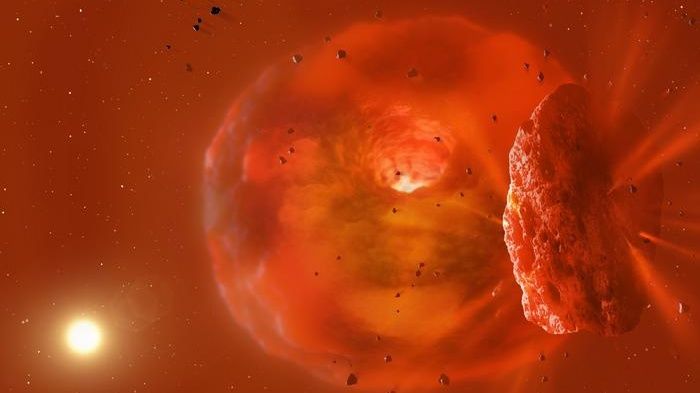A new study shows the possibility of an exoplanet collision and its consequences. Future observations with the James Webb Telescope could help study how the dust cloud spreads after such collisions.
On October 11, an international team of astronomers reported the first observable effects of the collision of two giant adult exoplanets that were orbiting a star similar to our Sun. Such collisions are not uncommon in the history of our solar system, so this discovery sheds light on how systems like ours evolve over eons.
Astronomers first noticed the effects of a collision between two super-Earths—ice giants more massive than Earth but lighter than Neptune—in December 2021, when the planetary system’s host star, 2MASS J08152329-3859234, suddenly darkened.
Subsequent observations in the visible spectrum showed that the eclipse was caused by some effect that lasted approximately 500 days. This eclipse occurred 2.5 years after infrared observations indicated the event, indicating that whatever was eclipsing the star had an orbital period of at least 2.5 years.

Scientists were able to explain the mysterious darkening of the star by the collision of adult exoplanets
“I knew even then that this was an unusual event,” Matthew Kenworthy, a senior lecturer at Leiden University and an author of the study, said in a statement.
Based on the temperature and size of the eclipsing material determined from computer simulations, the team concluded that the fragments were formed by the collision of two giant exoplanets. Three years after the collision, residual material randomly lined up in front of the star from our vantage point, dimming its brightness in the visible spectrum and creating what scientists perceived as a “mysterious eclipse.” The star itself is ordinary, its age is about 300 million years, which is significantly younger than our Sun, which is 4.6 billion years old.
A large number of collisions were common among planets and moons early in the history of our solar system. Previous research suggests that such collisions ceased about 3.9 billion years ago, beginning the era of the relatively peaceful system scientists observe today, although rare collisions still occur.
However, the latest study suggests that adult planets may also collide. Scientists note that future observations with the James Webb Space Telescope may allow them to observe how the dust cloud spreads over the next few years.
“Eventually, the remnant material could clump together and form new moons that orbit the new planet,” said Zoe Leinhardt, senior lecturer in astrophysics at the University of Bristol and co-author of the study.




